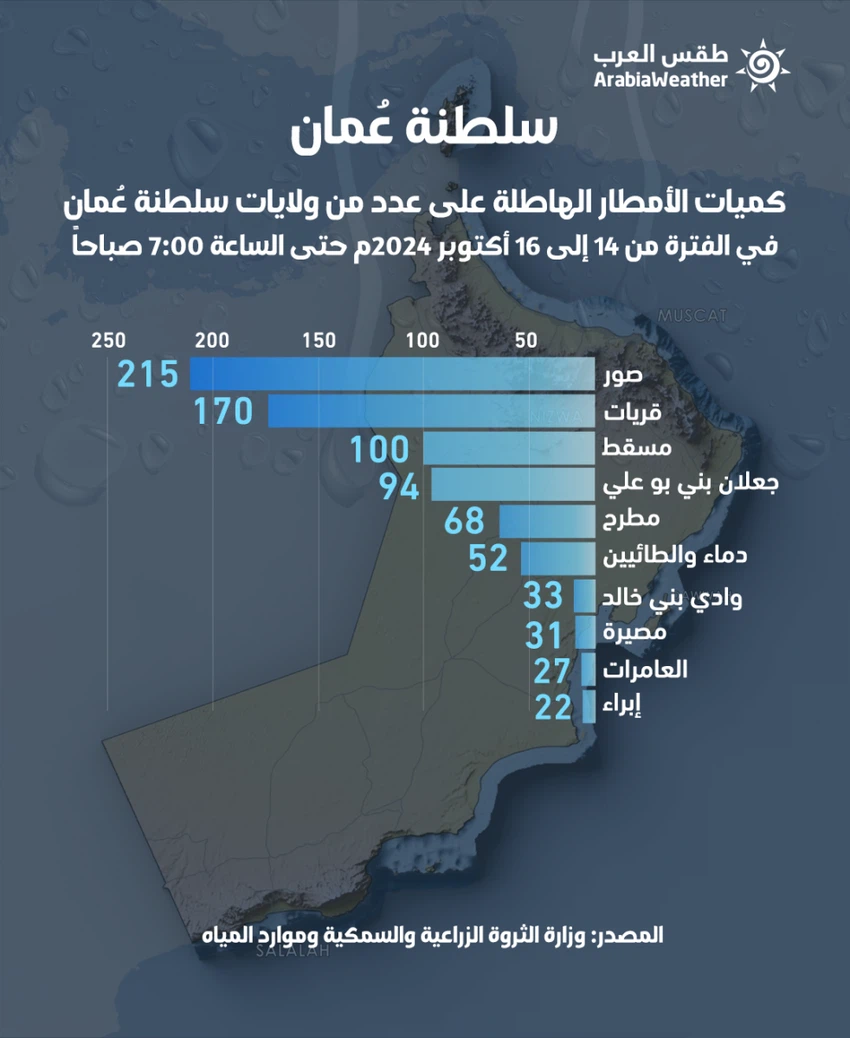Sultanate of Oman | Photos in the forefront .. Details of the amounts of rain falling on the Sultanate of Oman during the Al-Sayyal depression until Wednesday morning
2024-10-16
2024-10-16T09:49:57Z
The Ministry of Agriculture, Fisheries and Water Resources in the Sultanate published the distribution and quantities of rainfall in the Sultanate during the period from October 14 to 16, 2024 AD.
The Wilayat of Sur topped the list of the highest rainfall in the Sultanate, recording 215 mm, followed by Quriyat, recording 170 mm, and Muscat came in third place, recording 100 mm.

It is noteworthy that many areas of the Sultanate have witnessed moderate to heavy rainfall during the past 24 hours, as a result of the region being affected by unstable weather conditions resulting from the depression locally called the Al-Sayal depression.
This article was written originally in Arabic and is translated using a 3rd party automated service. ArabiaWeather is not responsible for any grammatical errors whatsoever.
Arabia Weather App
Download the app to receive weather notifications and more..



